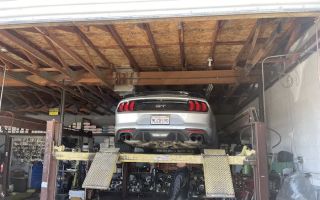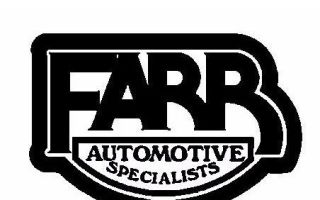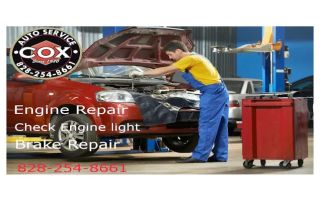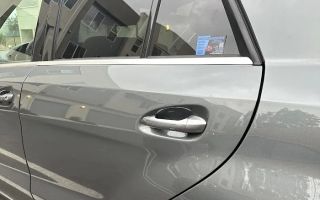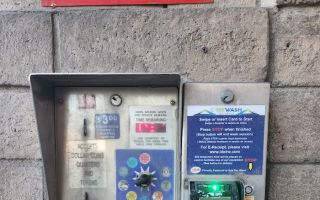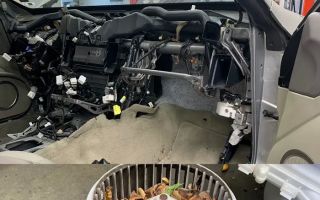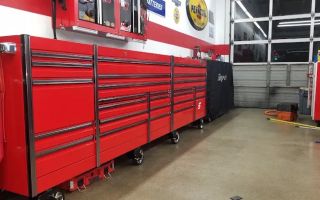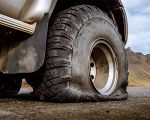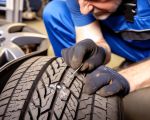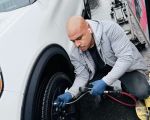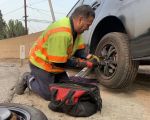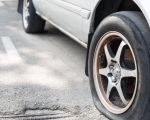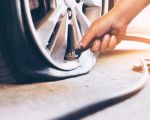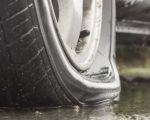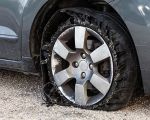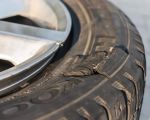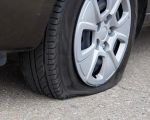Experiencing a car tire blowout is one of the most frightening and dangerous situations any driver can face. It often happens unexpectedly and can leave you feeling unsure of how to react in such a high-pressure situation. The key to staying safe during a blowout is to keep calm and take decisive actions. Let me walk you through exactly what you should do when you find yourself dealing with a blowout.
The first thing I realized during my first blowout experience was the sheer shock of the event. One moment everything was fine, and the next, the sound of a loud pop followed by the car pulling to one side. The sensation of losing control is unsettling, but remaining composed can make a huge difference in managing the situation effectively.

MR. TIRE INC.
2078 New York Ave, Huntington Station, NY 11746, USA
1. Recognizing the Symptoms of a Blowout
Before we jump into how to handle a blowout, it’s essential to understand how to recognize when one might occur. Sometimes, it can be sudden, but there are often telltale signs leading up to it. You might hear a hissing noise or feel your car pulling in one direction. If you're driving at high speeds, the sudden loss of pressure can be immediate and violent, causing the car to swerve unexpectedly. It's critical to stay alert and aware of any unusual noises or vibrations that might indicate a tire problem.

MR. TIRE INC.
2078 New York Ave, Huntington Station, NY 11746, USA
2. What to Do Immediately After the Blowout
Once I realized that I had experienced a blowout, I knew I had to stay calm. The immediate reaction of panicking or jerking the steering wheel could make the situation far worse. Here's the first thing you should do:
2.1 Grip the Steering Wheel Firmly
Ensure both hands are on the wheel, and you’re holding it tightly but not too rigidly. This will give you better control over the vehicle as you try to steer it safely off the road. The car may pull toward the side of the blowout, so it’s essential to maintain your composure and not fight against the car's movement.
2.2 Ease Off the Accelerator
Do not slam the brakes. It’s natural to want to stop as quickly as possible, but applying sudden pressure to the brake pedal during a blowout could cause the car to skid or lose even more control. Gradually release your foot from the accelerator and let the car slow down naturally. This will give you more time to assess your situation and react properly.
2.3 Steer Toward the Side of the Road
Once the car slows down, gently steer it towards the side of the road or a safe place. Ideally, aim for a flat, stable area where you can stop the car without causing further damage to the tire or risk of another incident. If possible, avoid stopping in the middle of the road or on a curve, where visibility for other drivers may be poor.
3. Setting Yourself Up for Safety
After you’ve pulled over to the side, your next priority is to set yourself up in the safest possible way. The key is to make sure you remain visible to other drivers and minimize the chances of an accident.
3.1 Turn on Your Hazard Lights
As soon as you have safely stopped, turn on your hazard lights. This will alert other drivers to your presence, helping to prevent accidents in case they don’t notice you in time. It’s crucial to do this immediately, especially on highways or busy roads where traffic speeds may be high.
3.2 Secure Your Vehicle
If you are on an incline, make sure to apply the handbrake or parking brake to prevent your car from rolling. It's also helpful to place reflective triangles or flares (if available) around your car to further increase visibility for approaching drivers.
4. Assessing the Damage
Before jumping into any repair attempts, it’s important to assess the situation carefully. Sometimes, a blowout can be more than just a punctured tire. If you notice any strange smells, fluid leaking, or smoke, it’s best not to attempt fixing the tire yourself. Instead, call for professional help. However, if the damage seems limited to the tire and you’re comfortable replacing it yourself, follow these next steps.
5. Replacing the Flat Tire
If you are experienced with changing a tire and have a spare, jack, and tire iron available, you can replace the flat tire yourself. Here’s how to do it:
5.1 Gather Your Tools
Ensure that you have all the necessary tools: a spare tire, a jack, a tire iron, and wheel wedges. It’s also a good idea to have gloves to protect your hands and a flashlight if you’re working in low-light conditions.
5.2 Loosen the Lug Nuts
Before you jack up the car, use the tire iron to loosen the lug nuts on the flat tire. Do not remove them entirely, just break their tightness so that they can be removed more easily once the car is lifted.
5.3 Jack Up the Car
Place the jack under a solid part of the car’s frame (not the soft parts like the exhaust). Lift the car high enough so that the flat tire is off the ground. Always follow the manufacturer's instructions for proper use of the jack.
5.4 Remove the Flat Tire and Replace It
Once the car is elevated, remove the loosened lug nuts and take off the flat tire. Then, replace it with the spare tire, ensuring that it fits securely onto the wheel hub. Once the spare is in place, hand-tighten the lug nuts onto the wheel before lowering the car back down.
5.5 Tighten the Lug Nuts
After the car is back on the ground, use the tire iron to tighten the lug nuts fully in a crisscross pattern. This ensures the wheel is properly secured. Once you’re finished, store all tools and the flat tire safely in your car.
6. Calling for Assistance
If you're unable to change the tire on your own or feel uncomfortable doing so, don't hesitate to call a roadside assistance service. Many insurance providers offer 24/7 support for tire issues. If you’re in need of a tow or emergency service, contacting a professional will ensure that your vehicle is handled safely and that you won’t be at risk of further harm.
7. Preventing Future Blowouts
After my blowout experience, I realized how important it is to take proactive measures to prevent tire blowouts from happening in the first place. Regular tire maintenance and inspections can go a long way in reducing the likelihood of a blowout. Here are a few tips that helped me stay prepared:
7.1 Monitor Tire Pressure
Keeping your tires properly inflated is one of the simplest ways to prevent a blowout. Over-inflated or under-inflated tires are more prone to damage. Make it a habit to check tire pressure regularly, especially before long trips.
7.2 Inspect Your Tires Regularly
Check for any visible signs of wear, damage, or punctures, including cracks or bulges in the tire sidewalls. Replacing worn tires can significantly lower your risk of experiencing a blowout.
7.3 Avoid Overloading Your Vehicle
Excess weight can put unnecessary strain on your tires, making them more susceptible to damage. Always follow the manufacturer’s recommendations for load capacity and avoid carrying excessive weight in your vehicle.
By following these tips, I’ve been able to reduce the chances of facing another blowout and ensure that my tires are in optimal condition.



